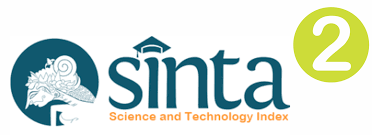The art of deception: Mediated communication strategies in customs and excise fraud
Abstract
Keywords
Full Text:
PDFReferences
Al Ali, N. A. R., Chebotareva, A. A., & Chebotarev, V. E. (2021). Cyber security in marine transport: Opportunities and legal challenges. Pomorstvo, 35(2), 248–255. https://doi.org/10.31217/p.35.2.7
Althibyani, H. A., & Al-Zahrani, A. M. (2023). Investigating the Effect of Students’ Knowledge, Beliefs, and Digital Citizenship Skills on the Prevention of Cybercrime. Sustainability (Switzerland), 15(15). https://doi.org/10.3390/su151511512
Andriyanto, T. (2022). Fraud Mediated Communication with Business Email Compromise Mode. Journal of Communication Research, 5(2), 220–243.
Anggraeni, N., Siswoyo, M., & Nurfalah, F. (2014). PUBLIC RELATIONS STRATEGY IN SUPPORTING THE MARKETING OF NATIONAL POWER PLANTS (PLN). ASPIKOM Journal, 2(3), 206–220.
Beacukai.go.id. (2023, December 29). This is an effort by Customs to prevent fraud on behalf of the institution. https://www.beacukai.go.id/berita/ini-upaya-bea-cukai-cegah-penipuan-mengatasnamakan-institusi.html
@BEACUKAIRI. (2023). Social Media of the Directorate General of Customs and Excise. beacukai.go.id
Brenner, S. W. (2010). Cybercrime: Criminal Threats from Cyberspace. Praeger.
BSSN. (2023). ANNUAL REPORT.
Cangara, H. (2014). Communication Planning and Strategy. King Grafindo Persada.
Carrillo-Mondéjar, J., Martinez, J. L., & Suarez-Tangil, G. (2022). On how VoIP attacks foster the malicious call ecosystem. Computers and Security, 119. https://doi.org/10.1016/j.cose.2022.102758
Christou, G. (2018). The challenges of cybercrime governance in the European Union. European Politics and Society, 19(3), 355–375. https://doi.org/10.1080/23745118.2018.1430722
Creswell, J. (2012). Qualitative Inquiry and Research Design: Choosing Among Five Approaches (3rd ed.). Sage.
Dizon, M. A. C., & Upson, P. J. (2021). Laws of encryption: An emerging legal framework. Computer Law and Security Review, 43. https://doi.org/10.1016/j.clsr.2021.105635
Dzhanadilov, O. M., & Azhibayev, M. G. (2019). Problems of countering criminal offenses in information and communication networks. Journal of Advanced Research in Law and Economics, 10(1), 134–143. https://doi.org/10.14505/jarle.v10.1(39).14
Hidayat, M. (2017). Kyai Communication Model with Students in Islamic Boarding Schools. ASPIKOM Journal, 2(6), 385. https://doi.org/10.24329/aspikom.v2i6.89
Holovkin, B., Cherniavskyi, S., & Tavolzhanskyi, O. (2023). FACTORS OF CYBERCRIME IN UKRAINE. Relacoes Internacionais No Mundo Atual, 3(41), 464–488. https://doi.org/10.21902/Revrima.v3i41.6401
Juditha, C. (2015). Communication Patterns in Cybercrime (Love Scams Case) COMMUNICATION PATTERNS IN CYBERCRIME (LOVE SCAMS CASE) COMMUNICATION PATTERNS IN CYBERCRIME (LOVE SCAMS CASE). Journal of Communication and Informatics Research and Development , 6(2).
Kominfo. (2018, July 18). National Police: Indonesia is the Second Highest Cybercrime in the World. https://www.kominfo.go.id/content/detail/13487/polri-indonesia-tertinggi-kedua-kejahatan-siber-di-dunia/0/sorotan_media
Kosseff, J. (2016). The hazards of cyber-vigilantism. Computer Law and Security Review, 32(4), 642–649. https://doi.org/10.1016/j.clsr.2016.05.008
Li, J. X. (2017). Cyber Crime and Legal Countermeasures: A Historical Analysis. International Journal of Criminal Justice Sciences, 12(2). https://doi.org/10.5281/zenodo.1034658
Li, X. (2016). Regulation of Cyber Space: An Analysis of Chinese Law on Cyber Crime. International Journal of Cyber Criminology, 9(2). https://doi.org/10.5281/zenodo.56225
Littlejohn, S. W., Foss, K. A., & Oetzel, J. G. (2021). Theories of Human Communication (Twelfth Edition). Waveland Press, Inc.
Mthembu, M. A. (2012). High road in regulating online child pornography in South Africa. Computer Law and Security Review, 28(4), 438–444. https://doi.org/10.1016/j.clsr.2012.05.010
Nunes, D. R. (2018). The means of obtaining evidence provided by the Portuguese cybercrime law (Law no. 109/2009 of 15 September 2009). Comparative Law Review, 24, 249–286. https://doi.org/10.12775/CLR.2018.010
Okezone. (2023, December 30). Cybercrime Threatens the Financial Industry, BSSN: There were 151.4 million incidents during 2023.
Okhrimenko, I., Stepenko, V., Chernova, O., & Zatsarinnaya, E. (2023). The impact of information sphere in the economic security of the country: case of Russian realities. Journal of Innovation and Entrepreneurship, 12(1). https://doi.org/10.1186/s13731-023-00326-8
Police. (2022). Cybercrime in Indonesia Has Increased Many Times.
Punda, O., Vavrynchuk, M., Kohut, O., Kravchuk, S., & Prysiazhniuk, M. (2023). The Legal Status and Capabilities of Cyber Police in Ukraine: The Reasons for the Existence of Frauds with the Use of IT Technologies. Pakistan Journal of Criminology, 15(2), 165–180. https://www.scopus.com/inward/record.uri?eid=2-s2.0-85167433844&partnerID=40&md5=667cb4ce9172abcbf31894ab08738682
Raets, S., & Janssens, J. (2021). Trafficking and Technology: Exploring the Role of Digital Communication Technologies in the Belgian Human Trafficking Business. European Journal on Criminal Policy and Research, 27(2), 215–238. https://doi.org/10.1007/s10610-019-09429-z
Ruvin, O., Isaieva, N., Sukhomlyn, L., Kalachenkova, K., & Bilianska, N. (2020). CYBERSECURITY AS AN ELEMENT OF FINANCIAL SECURITY IN THE CONDITIONS OF GLOBALIZATION. Journal of Security and Sustainability Issues, 10(1), 175–188. https://doi.org/10.9770/jssi.2020.10.1(13)
Shahbazi, A. (2019). TECHNOLOGICAL DEVELOPMENTS IN CYBERSPACE AND COMMISSION OF THE CRIMES IN INTERNATIONAL LAW AND IRAN. In Journal of Legal, Ethical and Regulatory Issues (Vol. 22, Issue 4).
Sin, J.-M., & Son, H.-R. (2019). Dealing with the problem of collection and analysis of electronic evidence. International Journal of Electronic Security and Digital Forensics, 11(3), 363–377. https://doi.org/10.1504/IJESDF.2019.100497
Walther. (1996). Computer Mediated Communication: Impersonal, Interpersonal, and Hypersonal Interaction. Communication Research, 3(43).
Walther, M., Jakobi, T., Watson, S. J., & Stevens, G. (2023). A systematic literature review about the consumers’ side of fake review detection – Which cues do consumers use to determine the veracity of online user reviews? Computers in Human Behavior Reports, 10, 100278. https://doi.org/https://doi.org/10.1016/j.chbr.2023.100278
Widiastuti, T. (2017). ANALYSIS OF THE ELABORATION LIKELIHOOD MODEL IN THE FORMATION OF RIDWAN KAMIL'S PERSONAL BRANDING ON TWITTER. ASPIKOM Journal, 3(3), 588–603. http://databoks.katadata.
DOI: http://dx.doi.org/10.30813/bricolage.v11i1.7881
Refbacks
- There are currently no refbacks.
Accredited by:
Indexed by:
UNIVERSITAS BUNDA MULIA PRESS
PROGRAM STUDI MAGISTER ILMU KOMUNIKASI
Lantai 3 Ruang Pascasarjana - Universitas Bunda Mulia
Jl. Lodan Raya No. 2, Ancol – Jakarta Utara 14430, Indonesia
Telp: +62 21 692 9090 ext.1317
Email: bricolage@ubm.ac.id; bricolage.mikom@gmail.com
This work is licensed under a Creative Commons Attribution-ShareAlike 4.0 International License.
View My Stats




























.png)

